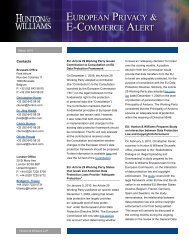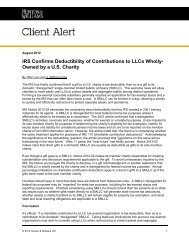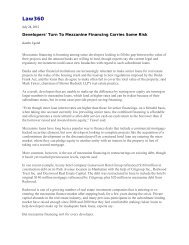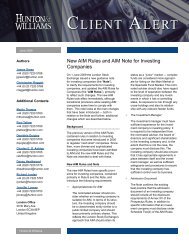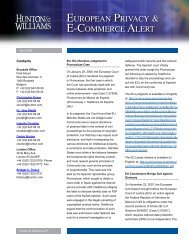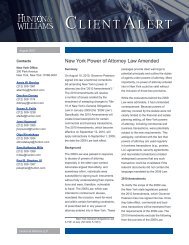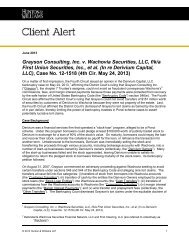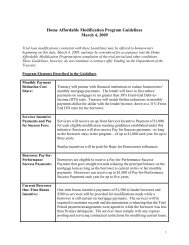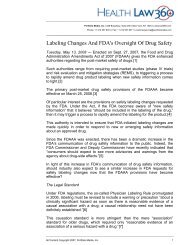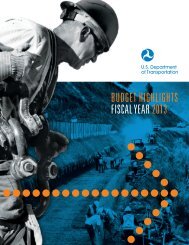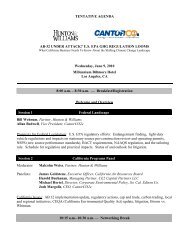Hunton & Williams Renewable Energy Quarterly, September 2009
Hunton & Williams Renewable Energy Quarterly, September 2009
Hunton & Williams Renewable Energy Quarterly, September 2009
You also want an ePaper? Increase the reach of your titles
YUMPU automatically turns print PDFs into web optimized ePapers that Google loves.
<strong>Renewable</strong> <strong>Energy</strong> <strong>Quarterly</strong><br />
The risk that projects could lose their eligibility to generate<br />
offset credits, potentially with little notice, as a result of an<br />
EPA or USDA review could discourage investment in projects<br />
and hinder the emergence of a robust offset credit market.<br />
More broadly, even features of the cap-and-trade system<br />
seemingly carved in stone are subject to change. No more<br />
obvious example exists than the number of emission allowances<br />
the bill requires the EPA to establish for each year<br />
of the program. The precise numbers are listed in a table<br />
embedded in the text of the bill, but the EPA is authorized to<br />
change these numbers if, among other things, it determines<br />
that the underlying emissions data on which these numbers<br />
are based is inaccurate.<br />
The EPA may make such a change only once, but even a<br />
one-time change would affect the number of allowances allocated<br />
to covered entities, states, federal agencies and other<br />
groups. This in turn fosters uncertainty, raises compliance<br />
costs and could potentially destabilize the carbon market.<br />
There also are instances in which the bill delegates authority<br />
for key changes to entities outside the Executive Branch. For<br />
example, the bill requires the EPA to report to Congress on<br />
U.S. and foreign efforts to reduce emissions and to recommend<br />
additional actions to address climate change. The bill<br />
then requires the National Academy of Sciences — a private<br />
entity whose members are not appointed by the president<br />
— to review the report and issue its own recommendations.<br />
The president is then required to order agencies to use all<br />
existing authority to implement these recommendations and<br />
submit a report to Congress requesting additional legislative<br />
action where needed.<br />
Although these provisions do grant the National Academy<br />
and the president a limited amount of discretion, they<br />
nevertheless raise potential constitutional issues, as they<br />
effectively allow an entity that is untethered to the democratic<br />
process to tie the president’s hands and force potentially<br />
unpalatable action.<br />
In the end, what all this means is that as a comprehensive<br />
climate change regulatory regime inches closer to reality,<br />
its enactment will mark only the beginning of the jockeying<br />
between possible winners and losers in the new U.S. carbon<br />
markets.<br />
3 <strong>Renewable</strong> <strong>Energy</strong> <strong>Quarterly</strong> www.hunton.com



